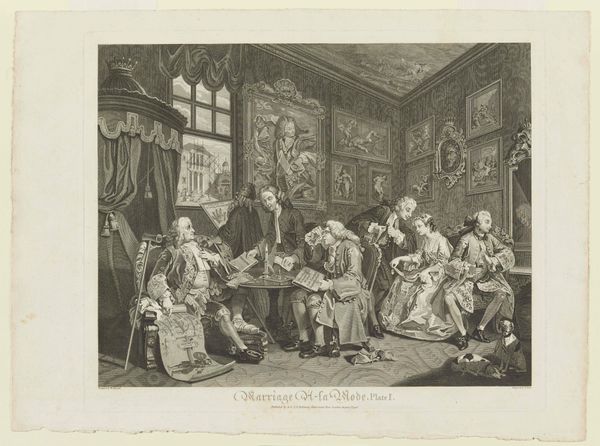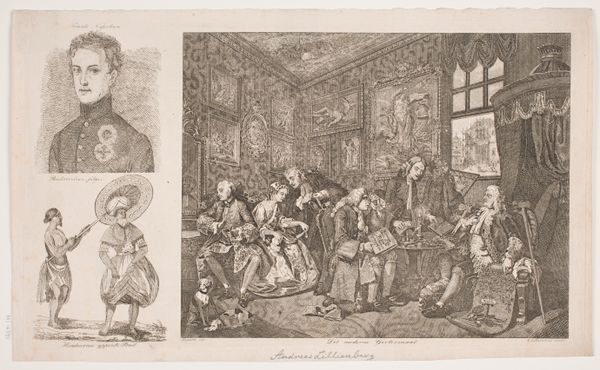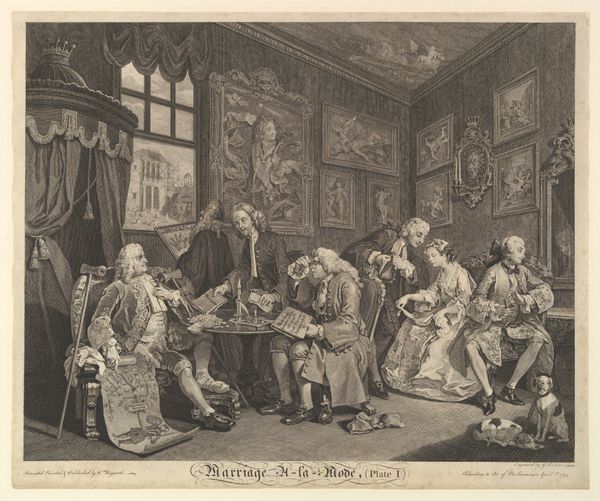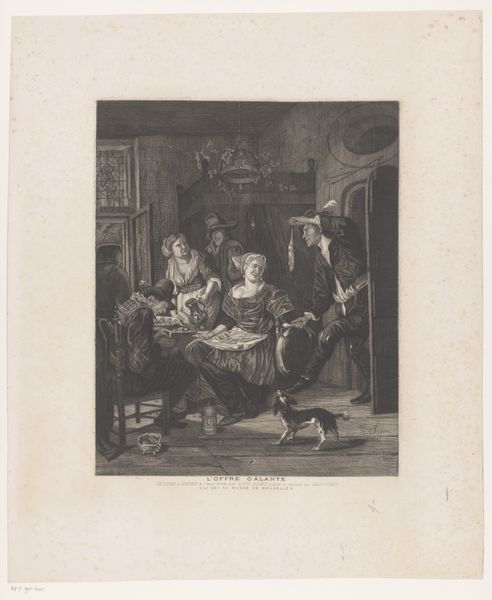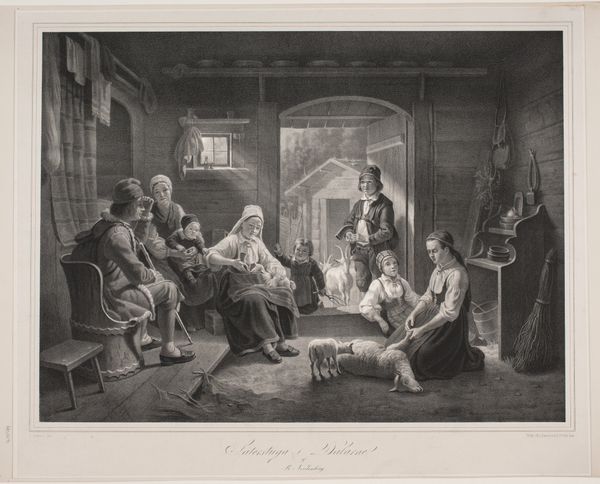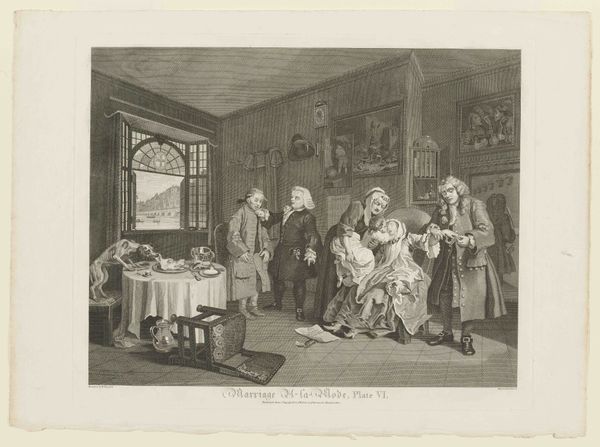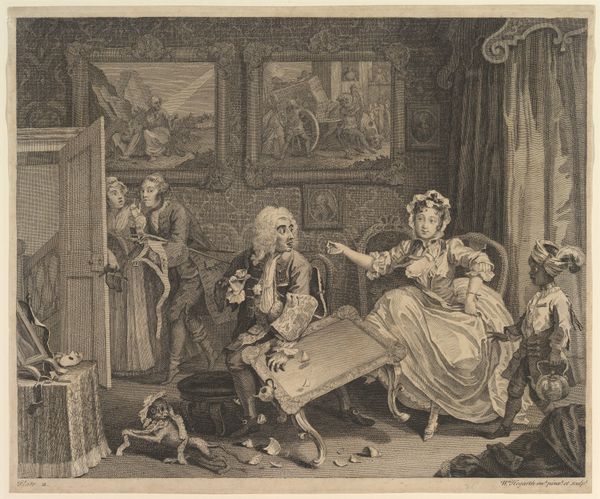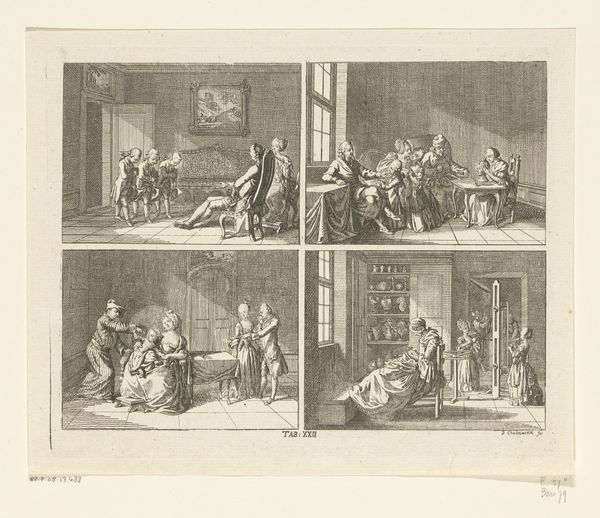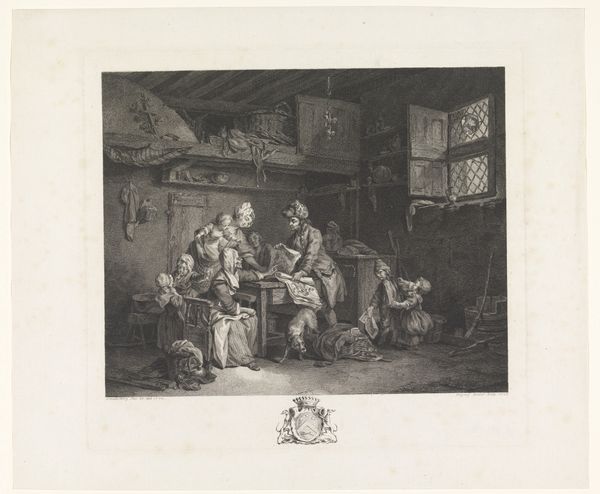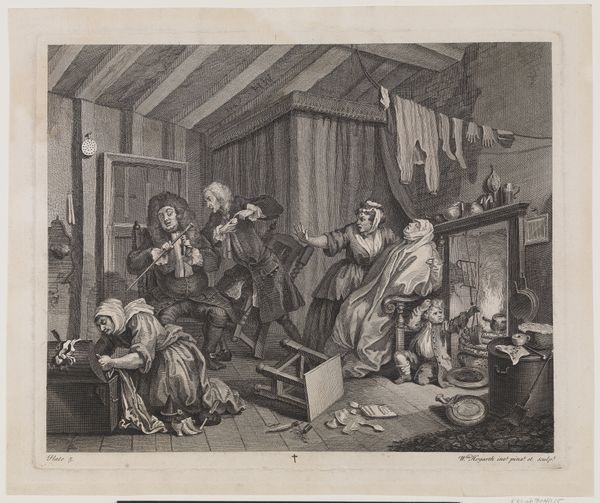
print, engraving
#
narrative-art
#
baroque
# print
#
figuration
#
genre-painting
#
history-painting
#
engraving
Dimensions: 15 1/4 x 18 5/8 in. (38.74 x 47.31 cm) (plate)
Copyright: Public Domain
Curator: This is “Plate I,” an engraving completed by William Hogarth in 1745. The print is currently held in the collection of the Minneapolis Institute of Art. Editor: Visually, it’s quite crowded, yet the stark monochrome lends a certain austerity. It's as if a comedic play is being performed in grayscale. Curator: Absolutely. Hogarth was a master of social satire. “Marriage A-la-Mode” series, of which this is the first plate, critiques the societal conventions surrounding arranged marriages within the 18th-century British aristocracy. Editor: Look at the composition—a chaotic domestic interior filled with figures absorbed in their own affairs. There’s a diagonal sweep from left to right, guiding the eye through the drama, culminating in the nonchalant couple at the center. Curator: Exactly, their union is a transaction, a blending of wealth and title rather than affection. The old nobleman on the left, wearied by gout, is interested only in confirming his lineage through this merger. We see his family tree prominently displayed as he negotiates a marriage settlement for his son. Editor: The textural detail achieved in engraving is remarkable, isn't it? Note the minute rendering of the fabrics, the ornate architectural elements and even the mottled skin textures conveying moral decay. Each carefully etched line contributes to the overall narrative effect. Curator: Consider the context. Hogarth wasn’t merely producing decorative art for the wealthy, he was creating works aimed at a burgeoning middle-class audience hungry for accessible art with social commentary. The distribution of his engravings was carefully managed, circumventing traditional patronage channels and tapping into a wider market, including broad public reception of this criticism against arranged marriage. Editor: There's a tension in the stark contrasts between light and shadow, wouldn't you agree? It mirrors the play of virtue and vice within this constricted space. This meticulous composition, so carefully considered... it has an undeniably theatrical feel to it. Curator: Indeed, his narrative paintings acted as morality tales, lessons that might not have otherwise been as public without print reproduction techniques like this. The artist takes on a vital public role, offering commentary for the masses through each print he sold. Editor: Considering the tonal range, the gradations and crisp definition, what might appear merely documentary, is formally ingenious. I find myself captivated by the way light articulates surfaces and sculpts volume out of the stark monochrome. Curator: Seeing it through your eyes reveals details easily missed. Considering Hogarth's intentions and the piece’s place in a wider debate adds layers to the picture too, wouldn’t you say? Editor: Absolutely, and bringing that debate to the compositional surface lets me reflect more broadly on technique!
Comments
No comments
Be the first to comment and join the conversation on the ultimate creative platform.


